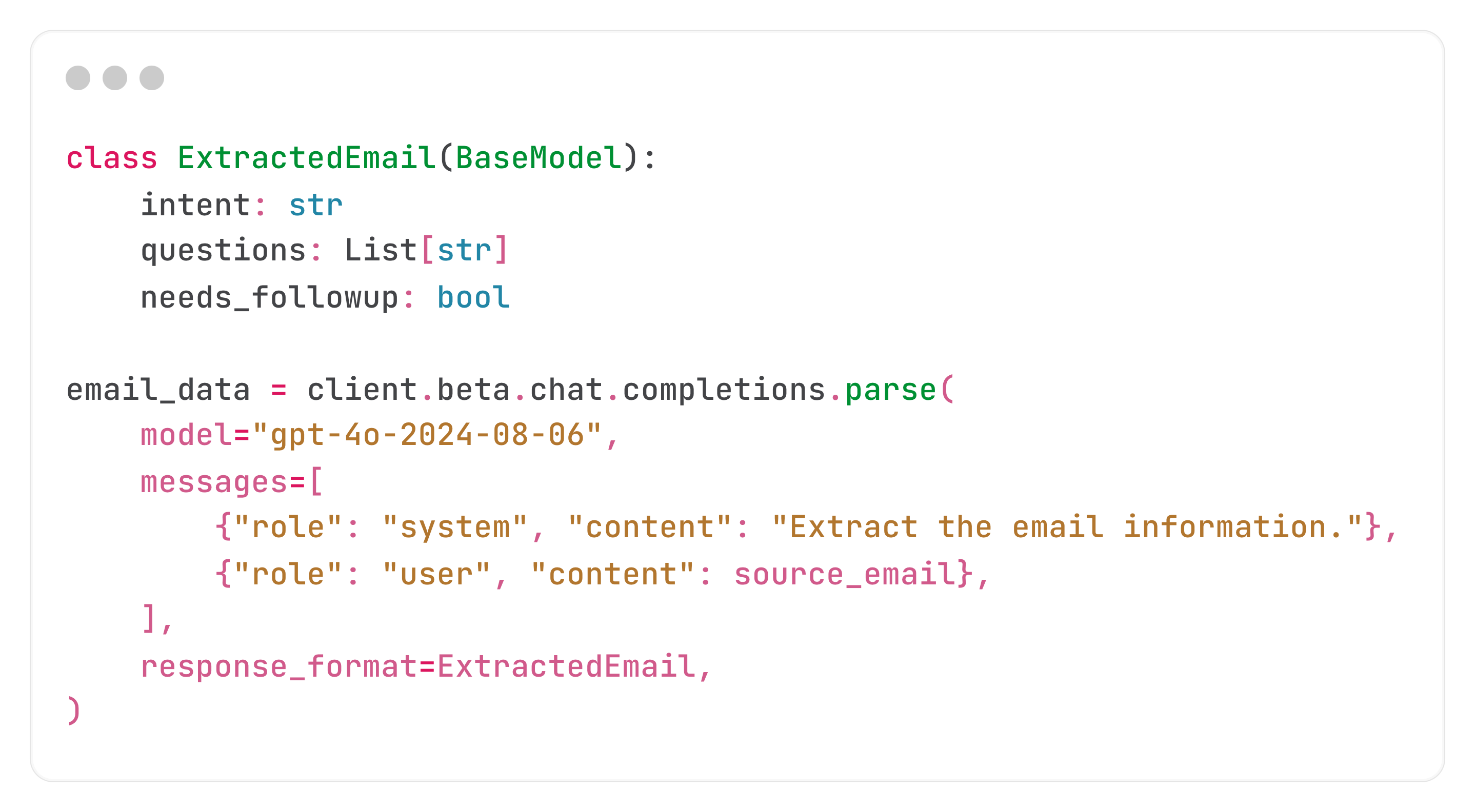From Messy to Meaningful: The Power of OpenAI's Structured Outputs
Previously, I illustrated a use-case where we provided a pump data plate (or nameplate) image and a Pydantic data model to GPT-4o to extract pump information. Since then, OpenAI has released a new functionality called Structured Outputs that facilitates this directly in the API call (as opposed to the previous method of function calling).
I realized that my implementation example might have been too specific to illustrate the greater usage and the more I interact with this API, the more promise I see in adopting it for many use cases.
The real power of structured outputs lies in transforming messy, unorganized data into neat, structured information. Here’s why it matters:
- Simplifies complex tasks:
- Email processing example: With one API call, you can break down an email into: sender, recipients, subject, main content, questions or action items
- Bridges human communication and computer understanding:
- Acts like a universal translator
- Converts free-form text into organized, machine-readable data
- Revolutionizes handling of unstructured data:
- Makes sense of long documents
- Extracts key details from user inputs
- Streamlines data processing across various industries

By simplifying these often challenging tasks, Structured Outputs paves the way for smarter, more efficient software in countless applications. It’s like having a super-smart assistant that can instantly organize and make sense of all kinds of information.
How could you leverage Structured Outputs to supercharge your daily tasks?